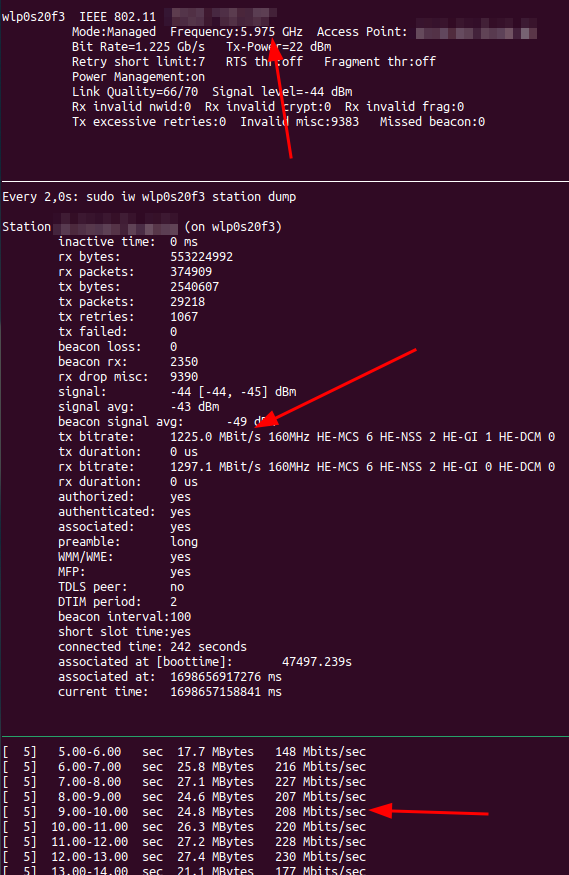
One of the interesting new features of the Lenovo T14 Gen 4 I haven’t had in my previous production notebook was the support of Wi-Fi in the 6 GHz band. So I was obviously quite curious how this would work and how performance would look like. So here’s the story.
5 GHz First
Even though the 6 GHz is new and shiny, I will use the 5 GHz band most of the time, so performance here is crucial as well. So I gave it a try at close proximity of my access point, that has a 160 MHz channel up and running in the 5 GHz band. As I hoped, throughput was above 900 Mbps in the downlink direction and at around 700 Mbps the uplink path. In other words, very close to 1 Gbps wired Ethernet line speed. Ok, that’s a good starting point.
6 GHz and Tethering

Now let’s have a look at the Intel’s AX211 chip performance in the 6 GHz band. As I don’t have a ‘real’ Wi-Fi access point supporting the 6 GHz band yet, I did the next best thing and used a high end smartphone connected to a fast 5G network and Wi-Fi tethering. When running a speed test on the device itself, I could easily reach speeds well beyond 1 Gbps on the cellular network. Over Wi-Fi however, I could only get up to around 220 Mbps. That is disappointing. It’s got nothing to do with the Wi-Fi channel, however, as the phone offered a 160 MHz channel, an exceptional signal level of -44 dBm, and a very high modulation and coding scheme in the downlink direction as shown in the screenshot on the right. Hm, I guess that’s not the end of the story then, I need to have a closer look.